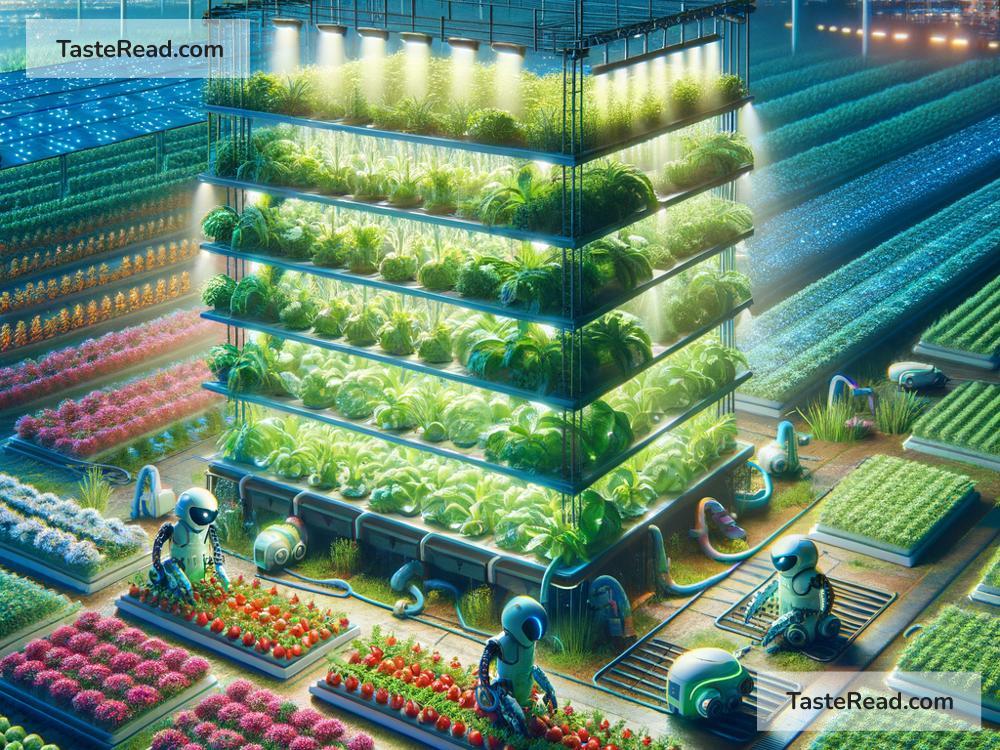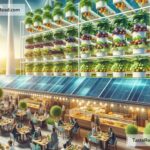The Future of Food and Environmental Conservation: A Hopeful Path Forward
As the world grows, so does our demand for food. By 2050, experts predict that nearly 10 billion people will share this planet. To feed everyone, we will need to rethink how we produce, distribute, and consume food without harming our environment. At the same time, tackling environmental conservation is critical. The health of our planet goes hand-in-hand with the health of our food systems. Let’s explore what the future might hold for food and environmental preservation and how we can strike a balance between them.
The Food Challenge: Feeding More People Sustainably
More people means more mouths to feed, but the way we currently produce food comes with challenges. Farming uses vast amounts of land, water, and energy. It also contributes to problems like deforestation, soil erosion, and greenhouse gas emissions. At the same time, millions of people around the world still struggle with hunger, while others waste tons of food every year.
The future of food, however, can be bright with innovation and smarter choices. Scientists, farmers, and everyday people are working to fix these problems with creative solutions.
-
Vertical Farming and Urban Agriculture
Imagine growing fresh vegetables in tall buildings instead of fields. Vertical farming and urban agriculture allow food to grow in small spaces using less water and soil. These methods can bring farms closer to cities, reducing transportation costs and carbon emissions. -
Plant-Based and Lab-Grown Foods
More people are choosing plant-based diets, which use fewer resources than raising animals for meat. Scientists are even creating lab-grown meat, which is real meat but doesn’t require raising or slaughtering animals. Producing lab-grown meat could significantly reduce greenhouse gas emissions and save land and water. -
Precision Farming
Modern technology allows farmers to use drones, sensors, and data to monitor crops closely. This is called precision farming, and it helps farmers grow food more efficiently. For example, they can use just the right amount of water or fertilizer without wasting resources. -
Reducing Food Waste
Around one-third of all food produced globally goes to waste. By improving food storage, recycling leftovers, and educating people about mindful consumption, we can make better use of the food we already have.
Environmental Conservation and Sustainable Food Practices
Producing food sustainably is only one part of the puzzle. Environmental conservation involves protecting the natural ecosystems that we depend on for survival. Climate change, deforestation, pollution, and biodiversity loss are major threats, but there’s still time to turn things around. Sustainable food practices can play a big role in helping the environment heal.
-
Regenerative Agriculture
Regenerative agriculture is a farming method that focuses on restoring the health of the soil. Healthy soil absorbs more carbon from the air and holds more water, helping farmers grow crops while fighting climate change. Regenerative practices include planting cover crops, rotating crops, and reducing the use of chemical fertilizers. -
Support for Local and Seasonal Foods
Buying locally grown and seasonal foods reduces the environmental impact of transportation and storage. When food travels long distances, it often requires planes, trucks, and cooling systems, all of which release emissions. Supporting local farmers also strengthens communities and creates jobs. -
Agroforestry
Agroforestry is the practice of combining trees and crops on the same land. Trees protect crops from harsh weather, enrich the soil, and provide food and resources. They also absorb carbon dioxide, helping fight climate change. -
Water Conservation in Agriculture
Agriculture uses a lot of freshwater, but new technology can help farms use water more efficiently. Drip irrigation systems, for example, deliver just the right amount of water directly to the roots of plants rather than flooding entire fields. Conserving water will be vital as clean water becomes scarcer due to climate change.
Partnerships for Positive Change
The future of food and environmental conservation isn’t something one person or group can achieve alone. It requires partnerships between governments, industries, scientists, and regular people. Policy changes, investments in green technologies, and education are all vital. It’s also important to consider food equity, ensuring that everyone—regardless of income—has access to healthy, sustainable food.
For example, governments can offer incentives to farmers who adopt eco-friendly practices. Businesses can reduce packaging and switch to renewable energy sources. Consumers can make small changes, like eating more plant-based meals, supporting local markets, or composting food scraps instead of throwing them away.
What You Can Do to Help
Even small actions can make a big difference. Here are some simple ways to contribute to a sustainable future:
- Choose sustainable foods: Buy local, organic, or seasonal products whenever possible.
- Waste less: Plan your meals to avoid throwing away food and store leftovers properly.
- Eat more plants: Incorporate plant-based meals into your diet.
- Learn and share: Educate yourself on food issues and spread awareness to friends and family.
- Restore nature: Plant a tree, participate in clean-ups, or support conservation initiatives.
A Future of Hope
The future of food and environmental conservation is full of possibilities. With new technologies, better practices, and a shared commitment to change, we can feed the world while protecting our planet. It will take effort from all of us, but the rewards—healthier communities, thriving ecosystems, and a greener planet—are worth it. By making thoughtful choices today, we can create a better tomorrow for future generations.
Let’s work together to ensure that humanity and nature thrive side by side. The journey ahead is challenging, but full of hope.


